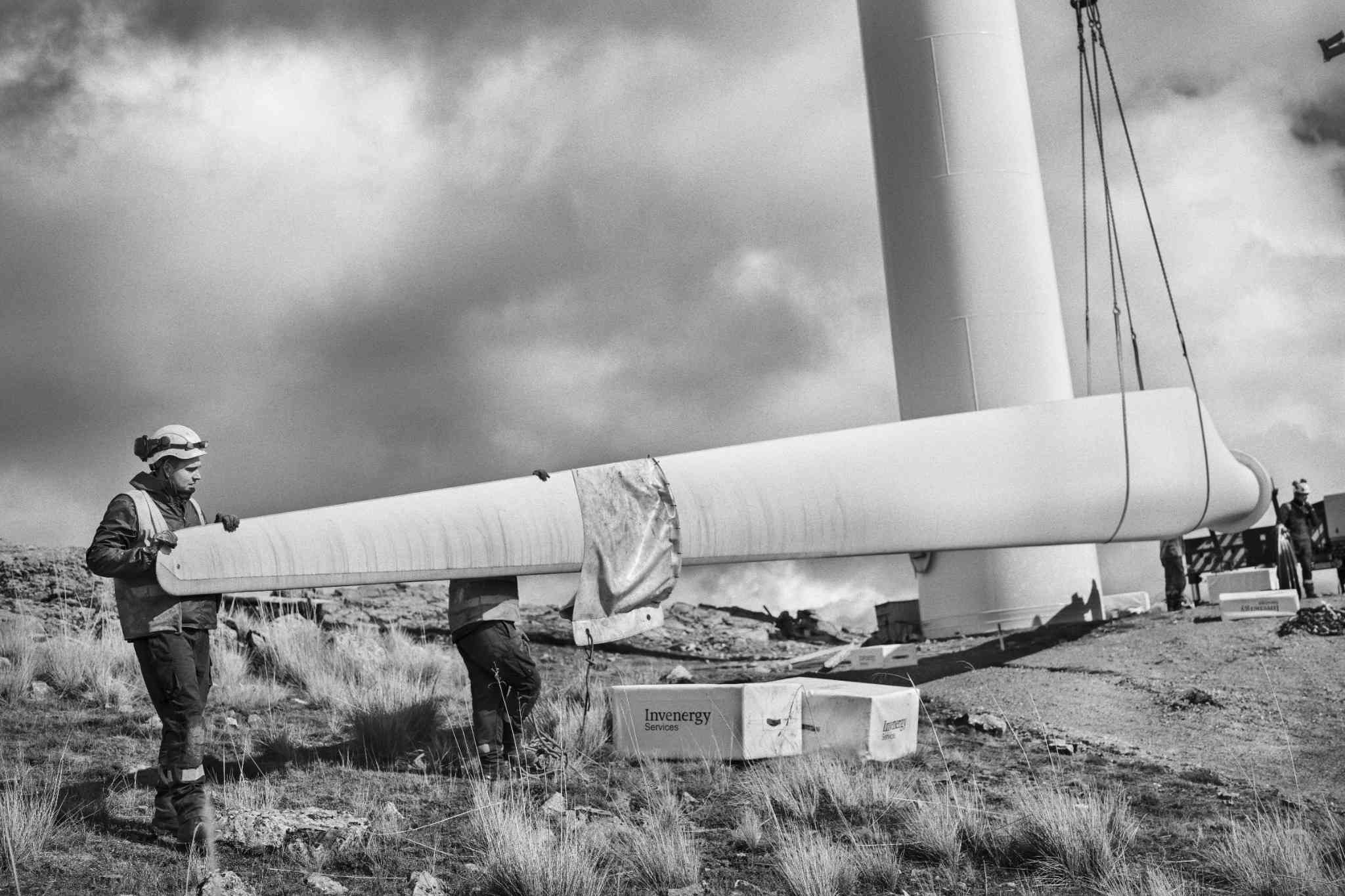{{article.title}}
At 1,580 meters of altitude, the world changes
At 1,580 meters of altitude, the world changes. As you wind along the road connecting Aldeavieja (Ávila) with the Puerto de Cruz del Hierro, the highest point of the Sierra de Ojos de Albos, you see how you leave the village behind and start encountering fully operational wind turbines, foxes roaming freely, birds of all kinds, and a unique vegetation capable of withstanding the harsh weather conditions of this Castilian steppe.
As you approach the summit, it feels like entering another world. The sun is left behind, and you begin to be surrounded by clouds and fog, moving quickly, pushed by a sometimes furious wind that makes it impossible to hold a conversation. But there, you find people made of tougher stuff, hardened by the Galician climate. For them, the harsh conditions of Endesa's Aldeavieja wind farm at over 1,500 meters of altitude are just part of their daily routine.
Wenceslao and Pablo have been monitoring the weather forecasts all week. They need to disassemble the 22 wind turbines of Endesa's Aldeavieja wind farm. But the weather isn’t cooperating. "If the wind blows, we can’t dismantle the wind turbine, which stands 45 meters tall up to the hub where the blades extend from, and if there's too much fog, we can't see anything either," they explain.




In less than 10 hours, wind turbine number 15 has been dismantled. Its components rest on the ground after 24 years of service producing clean energy. But it is only a temporary rest; their good condition allows them to have a second life, serving as spare parts in other plants. Some will travel to other countries, while others will remain in Spain—this is the true application of the circular economy concept.
There is less and less to go. The team’s operation continues, making the most of the day. Everyone keeps moving from one place to another while the fog lingers behind the mountain, watching expectantly.
En menos de 10 horas el aerogenerador número 15 se ha desmontado. Sus piezas descansan en el suelo reposando después de 24 años de servicio produciendo energía limpia. Pero es un descanso momentáneo, su buen estado permite que puedan tener una segunda vida, servir de repuesto en otras plantas, algunas viajarán a otros países, otras se quedarán en España, es el concepto de economía circular aplicado realmente.
Va quedando menos. La operación del equipo de trabajo sigue más adelante, hay que aprovechar el día. Todos se siguen moviendo de un lado a otro, mientras la niebla acecha detrás de la montaña, expectante.


Winter is approaching, and dismantling work continues, but now it's time to prepare the roads to keep harnessing the power of the god Aeolus through four new wind turbines that will replace the 22 dismantled by Wenceslao and Pablo’s team.
As they keep working, we leave the fog behind, winding along the road, and suddenly, the sun appears. If you look up, you can sense beneath that blanket of fog the remains of the Aldeavieja wind farm. We will return in spring, at 1,580 meters of altitude, to see Aeolus generating energy once again—this time, with even more power.
Note
The Aldeavieja project has benefited from the programs for granting investment aid in the repowering of wind installations, “Circular Repowering Programmes” of the “Recovery, Transformation and Resilience Plan – Financed by the European Union – NextGenerationEU. Specifically, the work has received aid of 6.51 million, granted by the Institute for Energy Diversification and Saving (IDAE). It is estimated that the Aldeavieja wind farm will begin its testing phase in October 2025 to enter full operation at the end of that same month.









